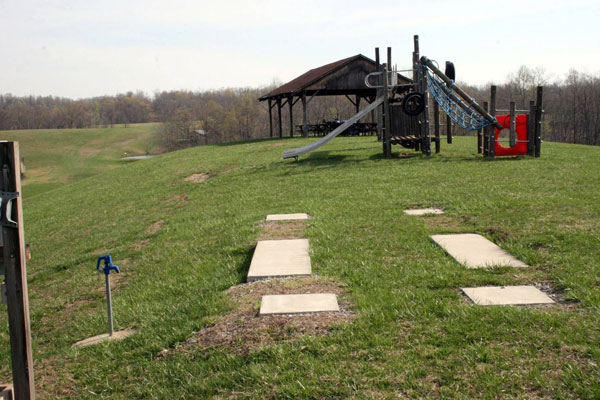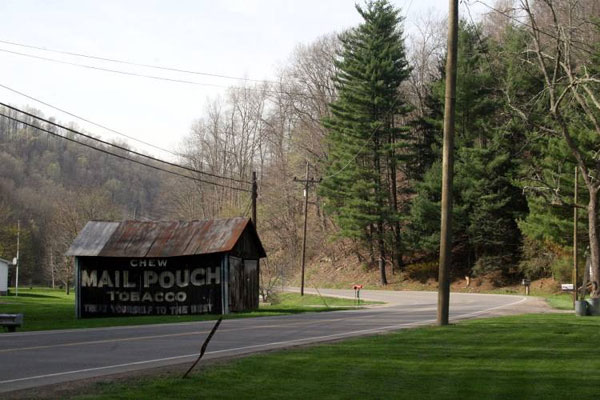


This is a report of my spring break observing excursion to Calhoun County Park, West Virginia. I spent five great nights camping, observing, imaging, biking and visiting during April 2-7, 2010. This report also includes a review of the new Explore Scientific 30mm mega-eyepiece.
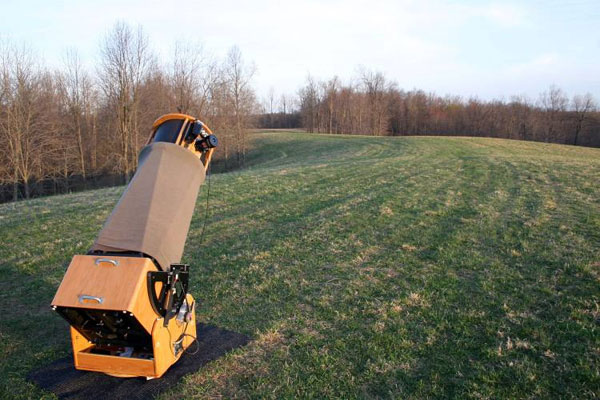
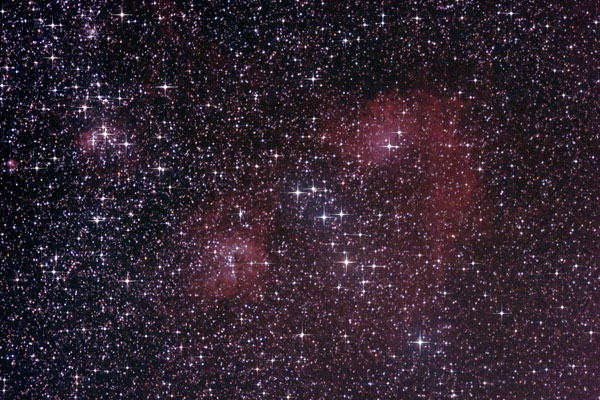
Calhoun County Park is known as one of the darkest places east of the Mississippi. It is the dark sky observing site for the Wilderness Center Astronomy Club, which is based SW of Canton OH. The Columbus Club also uses Calhoun.
http://cleardarksky.com/c/TWCACBrnWBkey.html?1
With my family out of town, I had the choice of going up to northern MI or Calhoun. The darkness is the same, so I chose to drive the extra 3 hours to gain 15 degrees Fahrenheit (and avoid frost). I got lucky, as they had near-record temperatures during my visit. It was in the 80’s during the day, and 50’s at night. Four of the five nights were clear, though I dodged some high clouds.
I drove my little Winnebago to Calhoun on Good Friday. The GPS wanted to take me the shortest route, which contained boulevards with stop lights. The Winnebago does not like a lot of stop lights. So I was always fighting the GPS, and she kept on saying “recalculating” in her irritated tone. The fastest route turned out to be the Ohio Turnpike to Cleveland, I77 south to Parkersburg WV, then 50 miles of a twisty ribbon of asphalt to the park. The total from my house in Saline was 375 miles, 7 hours exactly with stops. That last hour is some beautiful WVa mountain scenery, as the road follows the Little Kanawa River. Unfortunately, many locals were held up by some camper with an odd “NEBULA” license plate. I had checked out the park and nearby town of Grantsville using Google’s “street view.” It was a surreal déjà vu feeling when I was actually driving down those roads for the first time.
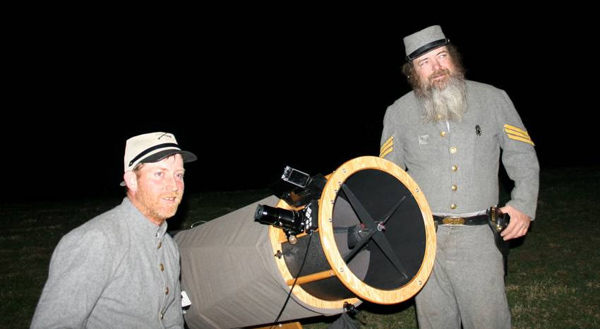
Calhoun County Park was originally a golf course, but being in the poorest county in the state, it has been converted to a park. The rounded tops of all the hills are grass-covered. The steep valleys (“hollers”) are deeply forested, and teeming with wildlife. I had many deer and wild turkey visitors. There are many great observing spots, with near-perfect horizons, in the park. Another astronomer from Kentucky had chosen a high spot above the fishing pond, so I joined him. There’s another spot nearer the entrance that features electricity, water, a picnic shelter and concrete pads (pit toilets close by—or the barn can be rented for $20/night to have a warm place to sleep inside).
The hiking and biking in and around the park are fantastic. The local Boy Scouts have created seven miles of trails through the woods, and I survived several of them. The mountain biking is quite “technical” with steep drops, climbs and a few logs to ride over. The road riding outside the park is an aerobic challenge, with frequent 300’ climbs. The most adventurous ride I took was on a dirt road at the bottom of a holler. It had three river crossings, where I had to get off the bike, remove my shoes and socks, and carry the bike across. I was almost swept downstream during the final crossing, and thought that anyone watching would bust a gut. There’s a History Village within the park, where buildings from the 1800’s have been placed. It’s a fun time to peek through the windows of the general store, post office and one-room schoolhouse.
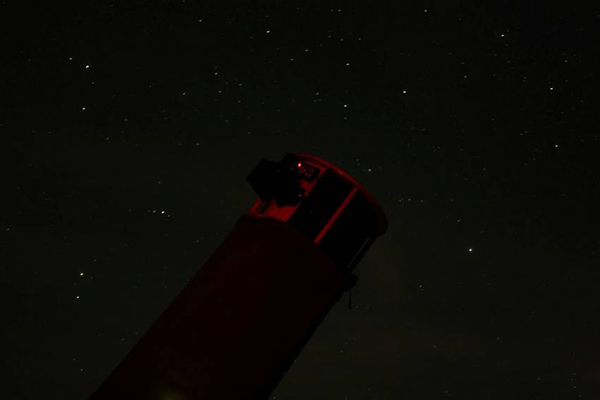
Being on the top of a hill, it was easy to spot Venus and Mercury once the sun set. Then Mars with its tiny white polar cap. Of course, Saturn was a big hit. Despite the frequent high clouds that first night, we were able to see the good spring clusters (Auriga’s M36, M37, M38, Gemini’s M35+NGC2158, Beehive). The Pleiades were great in the binoculars. The Orion Nebula was distinctly green in the 14.5” reflector. For the first time, I was able to see the structure of the “Flame Nebula” NGC2024 in Orion. As the winter Milky Way set, it was time for galaxies: M81/82, M51 and M101. Then the clouds thickened at 12:30am and the long day started to weigh heavily. I peeked out of the camper to see the moon rising in the trees.
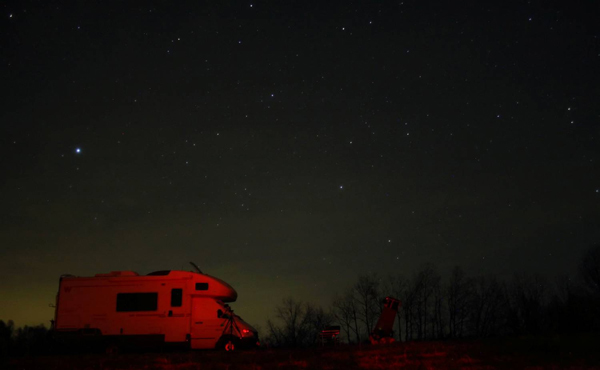
Calhoun County Park is quite remote, with dark skies. I was able to see stars to 6.1 magnitude at the zenith (meaning that I was there during a time of mediocre transparency due to the warm fronts). There are two significant light domes—Grantsville to the NE and Arnoldsburg + the local high school to the SSW. I get the sense that the SSW dome (rising up to 20 degrees) is rather new. It’s sad that irresponsible lighting is encroaching everywhere.
There are no lights whatsoever in the park—the barn’s bright light can be turned off from the outside switch. Some neighbors half a mile away have high pressure sodium lawn lights. Depending on your camping location, you may see no direct lights at all.
The best night of observing was my last. See the Explore Scientific Eyepiece Review for more details. After packing up the telescope at 2am, I could not go to bed without lying on the grass and taking in the sky. Very nice.
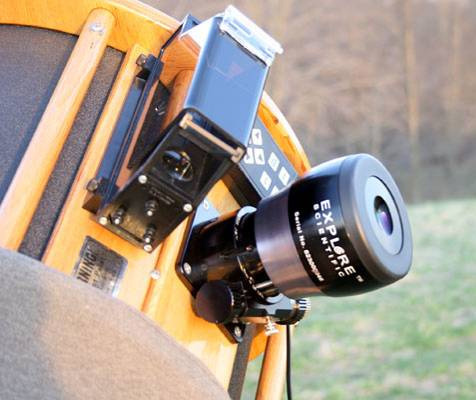
This is a truly huge eyepiece. Over 3lbs, 3.6” in diameter
at the top. 30mm focal length, 82 degree apparent field of
view. The actual field of view in my 14.5” f/4.3 Starmaster
was over 1.6 degrees. I know this because when looking at
the Ring Nebula, I was just barely able to fit in BOTH
Sheliak (![]() Lyrae) and Sulafat (
Lyrae) and Sulafat (![]() Lyrae). This is a breathtaking
field of view.
Lyrae). This is a breathtaking
field of view.
The eyepiece has generous eye relief. My 49 year old eyes had no problem
handling the 7mm exit pupil,
once fully dark-adapted. This is the ideal eyepiece for either large objects
or groups of normal-sized objects.
M42 is simply amazing, allowing me to see the Running Man dark nebula for
the very first time (in the same
field of view as M42 and M43). I was able to resolve tiny and yellow NGC2158
next to M35. I was able to
see the Flame Nebula and the faint nebula line that holds the Horsehead
(but no Horsehead was seen and I
did not have a H-![]() filter). The view of the Beehive makes you think you
are inside the cluster. Nebulosity in
M45 was apparent. I loved the Leo triplet, especially the edge-on NGC3628.
M81 and 82 are perfect objects
for this eyepiece.
filter). The view of the Beehive makes you think you
are inside the cluster. Nebulosity in
M45 was apparent. I loved the Leo triplet, especially the edge-on NGC3628.
M81 and 82 are perfect objects
for this eyepiece.
My favorite and most memorable observing was “galaxy hopping” through the Virgo Cluster. Usually I associate this activity with cold weather, so it was a delight to observe in shorts. Too early in the season for mosquitoes! The ES 30mm was well-suited to tracking down Markarian’s Chain. In fact, as I spotted dozens of galaxies and identified them with a chart, I saw no fewer than three galaxies in any random field of view.
The maximum was 12 galaxies counted in a single field of view!
Now the drawbacks. First and foremost, my nose got in the way. Now I don’t think I have an overly big nose, but I just did not know what to do with it when using the ES 30mm. The huge top diameter of 3.6” makes it IMPOSSIBLE for me to peer directly into the lens. I must turn my head and look 10-20° outward from dead-on in order to fit my nose alongside the rim. This is not a huge problem, but is annoying to me. If someone had a larger head, or smaller nose, this would be less of a problem.
Secondly, the eyepiece has significant coma in my scope. Not surprising, since I’m a fast f/4.3. But I sold my Paracorr after buying the Denkmeier binoviewer. This eyepiece requires a coma corrector. Only the central half of the FoV is in sharp focus. The next quarter has distortion, but not objectionable. The final quarter is objectionable (to me at least). BUT, this coma problem is primarily due to my telescope, and not this good eyepiece.
Summary of Positives: Fantastic wide field “you are there” views, allows you to fit in the huge objects or groups of objects, sharp (in center), no pincushion, good eye relief, excellent value for the money.
Summary of Negatives: Top diameter too wide for your nose, requires a Paracorr for focal ratios less than about f/5, magnification is too low in a <70” focal length scope to be the #1 main eyepiece.
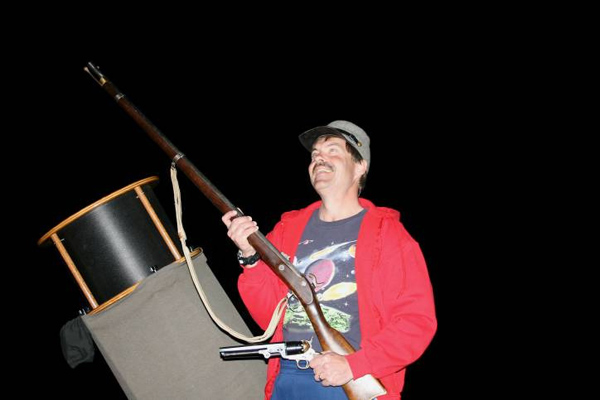
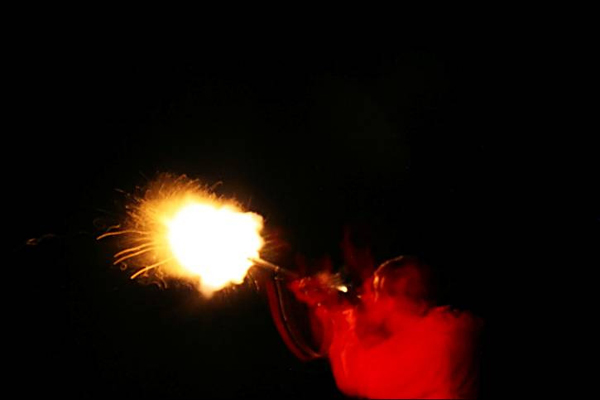
I was treated with supreme southern hospitality throughout my trip. Shirley, a park board member, met me when I arrived. Nub and Jimmy, Confederate Civil War Re-enactors, were my in-park hosts. They enjoyed looking through the telescope, telling me stories and letting me shoot their authentic black powder guns.
Park president Henry stopped by with a gift of honey from his own hives. Shirley, the editor of the local paper, came twice to interview me and show her grandchildren the telescopes. The local online news site wrote an article about my visit http://www.newspapersites.net/magazine/the-hur-herald.asp (see 4/5/2010). Bob watched in horror as a gust of wind blew over my Lunt solar scope (it’s now in for repairs). Larry brought the Boy Scout troop for a star party, and we made smores afterward. Everyone asked me when I was coming back, and hoped I’d bring many folks with me. Upon departure, I was presented with venison, chicken, pork, and beef.
I highly recommend Calhoun County Park as an observing adventure. The key advantages over Michigan are warmer temperatures, better scenery and more challenging hiking & mtn biking. The best times to visit are March/April and October/November. Feel free to contact me for more information (Brian D. Ottum, Ph.D. at (734) 429-3559).
For more information see the park’s website http://www.calhouncountypark.com/
